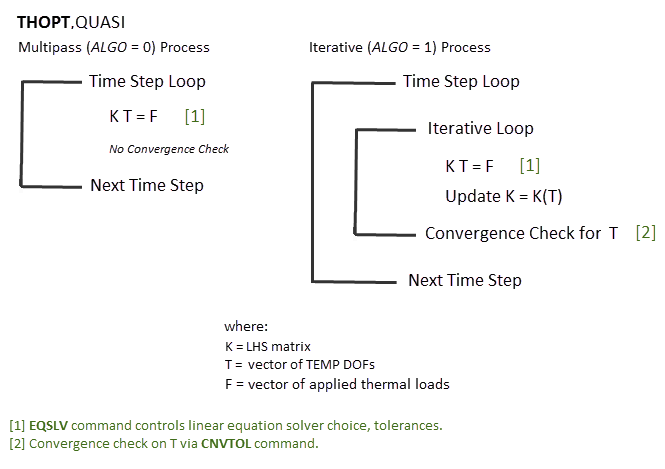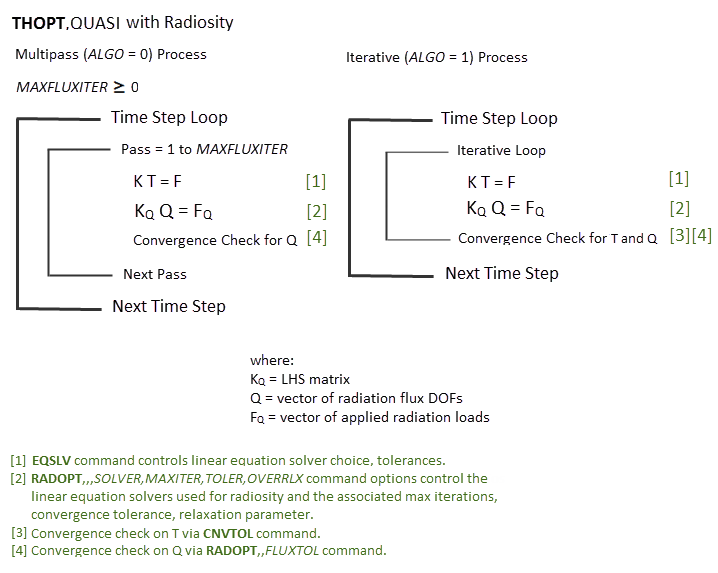Two methods are available for solving for temperature degrees of freedom (TEMP):
Issue the THOPT command to specify the solution method. The
command’s ALGO argument determines whether the
specified solution method uses a multipass process or an iterative process.
For a thermal analysis where radiosity is present, see Solving for Temperature and Radiosity.
The FULL solution method (THOPT,FULL) uses a Newton-Raphson (NR) algorithm and solves for the temperature correction (ΔT). This method allows for multiple corrections to be applied to obtain the final converged solution.
The following figure illustrates how the FULL method obtains the solution via a multipass process:
The FULL solution method can also solve for degrees of freedom other than temperature.
The QUASI solution method (THOPT,QUASI) uses a Picard algorithm and solves directly for the temperature (T).
The following figure illustrates how the QUASI method obtains the solution via a multipass or an iterative process:
The QUASI method is an approximation to the FULL method and is not as accurate when the nonlinearity is strong. The conductivity matrix is not updated every iteration, but only if the material properties change beyond the specified criterion. To minimize inaccuracy, use small time steps.
The QUASI solution method solves for temperature degrees of freedom only.
When radiosity is present, adjustments to the FULL or QUASI solution method are necessary so that separate solutions can be obtained for temperature and radiosity.
The following figure illustrates how the FULL method obtains temperature and radiosity solutions via a multipass process:
When using the FULL solution method (which requires the multipass
(THOPT,FULL,,,,,0) option), the MAXFLUXITER
argument on the RADOPT command controls the number of passes. This method
may sometimes converge prematurely for temperature, but not for radiosity flux, giving an
unconverged solution.
The following figure illustrates how the QUASI method obtains temperature and radiosity solutions via a multipass or an iterative process:
The number of equilibrium iterations required for the iterative QUASI option (THOPT,QUASI,,,,,1) is set via the NEQIT command.






